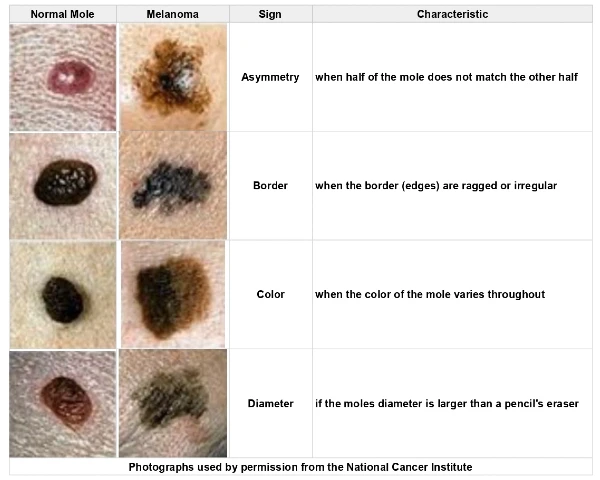Introduction to Moles
Moles, also known as nevi, are small, colored spots on the skin made up of clusters of pigment-producing cells called melanocytes. Most people have moles, and they are generally harmless. However, certain types of moles–especially those with an unusual appearance (dyspastic nevi)–can develop into melanoma, a serious form of skin cancer. In this guide, we’ll explore the different types of moles, how to monitor them, and when to seek medical advice.
Types of Moles
Common Moles
Common moles are usually small (less than 5 millimeters in diameter), have a uniform color (typically brown), and can be flat or raised. These moles are very common and are generally harmless.
Atypical Moles (Dysplastic Nevi)
Atypical moles are larger than common moles and have irregular shapes and multiple colors. They may have uneven borders and can be found in areas not typically exposed to the sun. People with atypical moles have a higher risk of developing melanoma.
Congenital Moles
Congenital moles are present at birth and can vary in size from small to large. Large congenital moles have a higher risk of turning into melanoma compared to smaller ones.
Spitz Nevi
Spitz nevi are raised, pink, and dome-shaped moles that often appear in children and adolescents. While they can look similar to melanoma, they are usually benign. However, they should be evaluated by a dermatologist to rule out cancer.
Experts recommend that if you are at increased risk for melanoma that you check skin once a month. It’s suggested that you contact a dermatologist if you discover a mole that itches, bleeds or exhibits changes. If a mole has variations in color from one area of the mole to another or is larger than the size of a pencil eraser it should be checked by a dermatologist.
Risk Factors for Melanoma
Certain factors increase the risk of melanoma, including:
- Fair Skin: Individuals with fair skin have less melanin, making them more susceptible to UV radiation.
- History of Sunburn: Repeated sunburns, especially blistering ones, increase melanoma risk.
- Excessive UV Exposure: Prolonged exposure to ultraviolet light from the sun or tanning beds can damage skin cells.
- Living at High Elevations or Near the Equator: These regions receive more intense UV radiation.
- Multiple or Unusual Moles: Having many moles or atypical moles increases melanoma risk.
- Family History of Melanoma: A genetic predisposition can significantly raise the risk.
- Weakened Immune System: Conditions or medications that suppress the immune system can increase melanoma risk.
Monitoring Your Moles
Regular self-examinations are crucial for early detection of melanoma. Use the ABCDE method to evaluate your moles and use the mole chart below as a handy reference:
- A – Asymmetry: One half of the mole doesn’t match the other half.
- B – Border: The edges are irregular, scalloped, or poorly defined.
- C – Color: The mole has varying colors such as shades of brown, black, tan, white, red, or blue.
- D – Diameter: The mole is larger than 6 millimeters (about the size of a pencil eraser).
- E – Evolving: The mole changes in size, shape, or color over time.
Mole Chart

When to See a Dermatologist
Consult a dermatologist if you notice any of the following changes in your moles:
- Itching or tenderness
- Bleeding or oozing
- Rapidly growing or changing in appearance
- Multiple colors within the same mole
- Irregular borders
Dermatologists can perform a thorough examination and may recommend a biopsy if a mole looks suspicious. Early detection and treatment of melanoma significantly improve the chances of a successful outcome.
Preventative Measures
Taking steps to protect your skin can reduce the risk of developing melanoma:
- Use Sunscreen: Apply a broad-spectrum sunscreen with an SPF of 30 or higher every day, even on cloudy days.
- Wear Protective Clothing: Hats, long sleeves, and sunglasses can shield your skin from UV rays.
- Seek Shade: Avoid direct sun exposure between 10 a.m. and 4 p.m. when UV rays are strongest.
- Avoid Tanning Beds: Tanning beds emit harmful UV radiation that increases the risk of skin cancer.
- Regular Skin Checks: Perform monthly self-examinations and schedule annual skin checks with a dermatologist.

Conclusion
Understanding and monitoring moles is essential for early detection of melanoma. By familiarizing yourself with the types of moles and risk factors, and by performing regular self-examinations, you can take proactive steps to protect your skin health. Remember, when in doubt, always consult a dermatologist to ensure your skin remains healthy and cancer-free.




